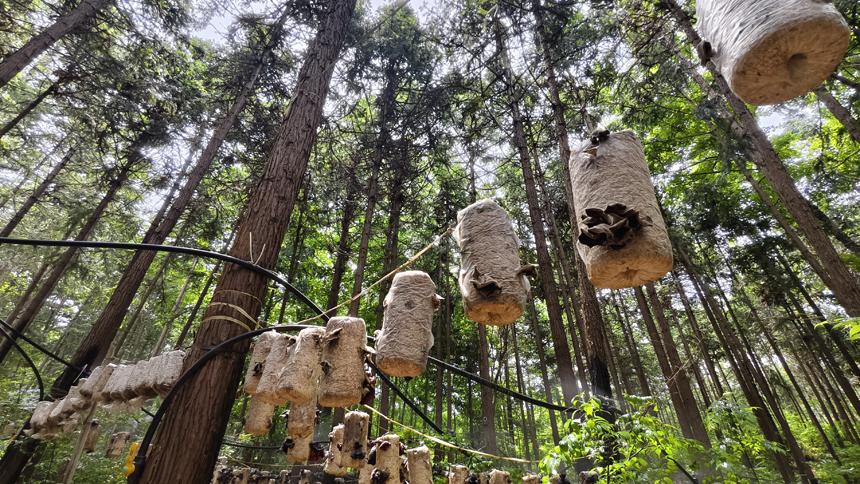Young Chinese artisan recreates ancient murals lost overseas a century ago
Liu Ziqun, a Chinese artisan born in the 1990s, is devoted to recreating ancient murals that were taken from China and now sit in museums overseas.
"They belong in our temples, yet now they sit in display cases in foreign countries, silently telling stories of pain," Liu said.
One ancient mural, "Two Bodhisattvas Burning Ritual Incense," originally adorned a wall of Cisheng Temple in Wenxian county, central China's Henan Province. Stolen and trafficked abroad during the Republic of China era (1912-1949), it now hangs in the Nelson-Atkins Museum of Art in the United States.
Liu was born into a family of traditional painted sculpture artisans in Jincheng city, north China's Shanxi Province. His father, Liu Huibin, is a master craftsman recognized as a representative inheritor of Jincheng's traditional painted sculpture-making craft, which appears on Shanxi's provincial-level intangible cultural heritage list.

Liu Ziqun, a Chinese artisan born in the 1990s, and his father, a painted sculpture artist, work together on a painted sculpture at Guandi Temple in Linfen city, north China's Shanxi Province. (Photo/Wang Fan)
Growing up watching his father create painted sculptures for temples throughout the region, Liu developed a deep fascination with traditional Chinese art. After completing his postgraduate studies, he returned home to dedicate himself to researching and creating murals and painted sculptures.
In 2015, while enrolled in a professional development program at Luxun Academy of Fine Arts in northeast China's Liaoning Province, Liu discovered something that would change his mission. Flipping through a foreign-language art book, he encountered mural patterns unlike any he had seen before.
A caption below each image revealed that the mural was housed in a foreign museum, instantly sparking his passionate interest in cultural repatriation through art.
For years following that pivotal encounter, Liu systematically searched official websites of major museums worldwide, hunting for images of lost Chinese murals and painted sculptures. As he discovered pictures of murals that had been crudely restored according to Western aesthetic sensibilities rather than historical accuracy, Liu felt compelled to act. He decided to replicate and restore these precious cultural treasures himself.
The endeavor proved far more challenging than he had anticipated.

Liu Ziqun, a Chinese artisan born in the 1990s, makes natural mineral pigments by hand. (Photo/Wang Fan)
"The painting techniques for intricate details must be inferred through substantial research into materials from the same historical period. They should never be restored based merely on modern assumptions. Only restorations grounded in rigorous historical scholarship can withstand the test of time," Liu explained.
Determined not only to reproduce the original colors of ancient murals using natural mineral pigments but also to correct errors in Western restorations, Liu immersed himself in research. He scoured temples and ancient texts, examining every available source to find evidence for each missing detail.
He studied artworks on paper and silk, cave murals and cliff paintings from corresponding historical periods, and even created mural interpretations of pottery figurines and woodcarvings housed in museums — all to ensure the most authentic restoration possible.

Liu Ziqun, a Chinese artisan born in the 1990s, colors a sculpture. (Photo/Wang Fan)
Creating a mural involves more than 10 intricately connected steps, where the slightest error in any phase can doom the entire project.
After more than 100 failed attempts and countless hours of refinement, Liu finally developed a systematic restoration process that successfully recreates the lost splendor of ancient Chinese murals.
"They may have taken away the murals, but they can never strip us of the skills needed to create them. Generation after generation of artisans in Shanxi can always bring them back to life," Liu said.
"I hope that one day, the murals I have restored can be displayed in their original locations, so I can help bring these lost artworks home," he added.
Photos
Related Stories
Copyright © 2025 People's Daily Online. All Rights Reserved.









